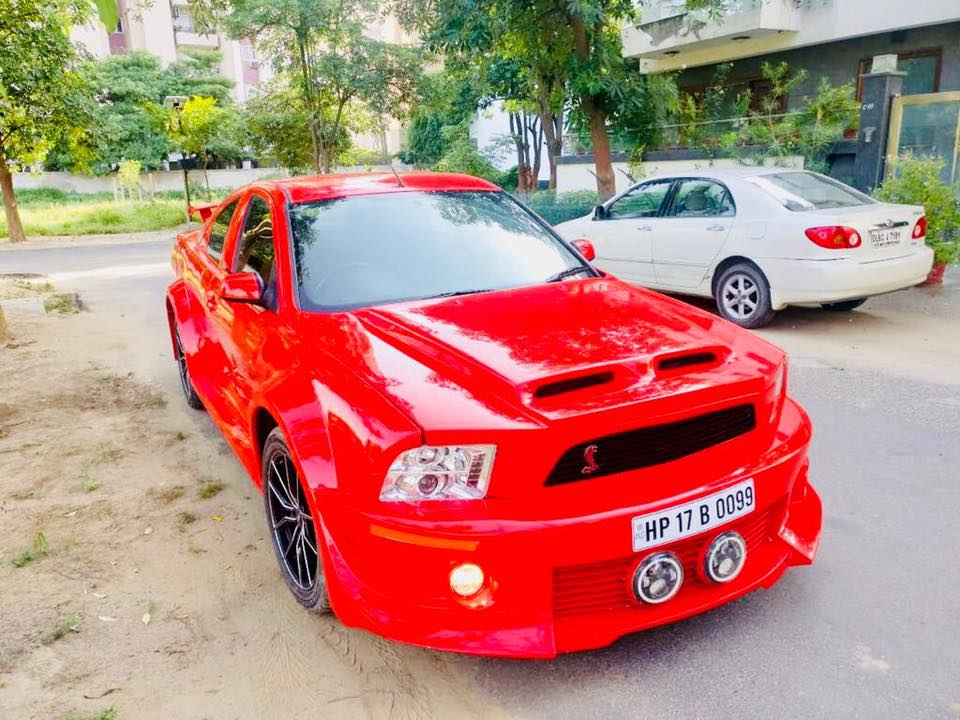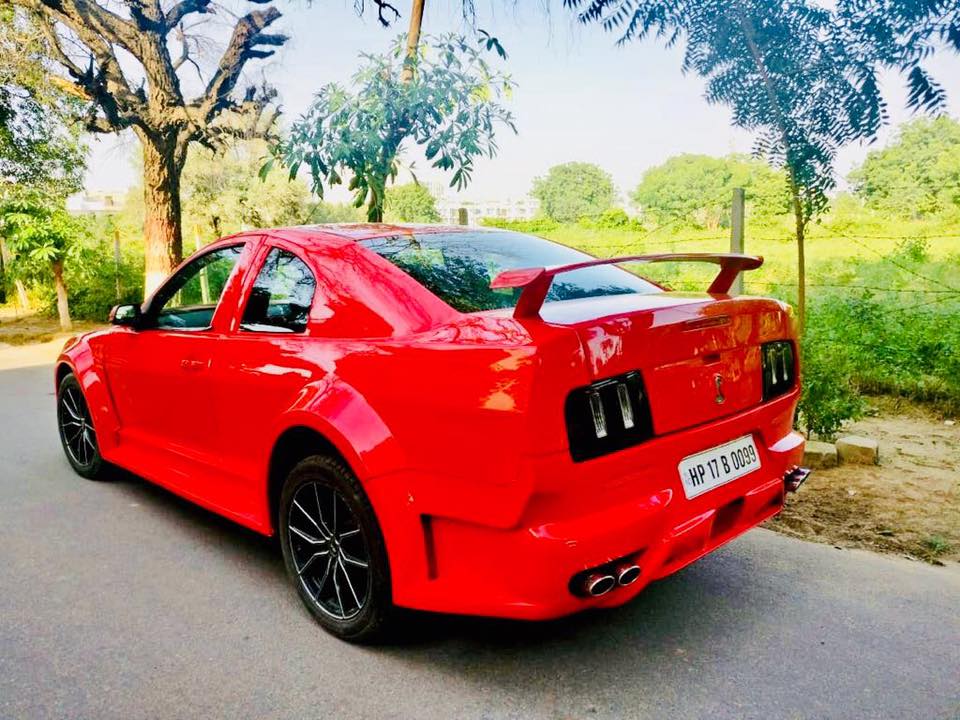Are we going to downplay what drivers do by equating it to a few hours or sweat and a marketing commitment, seriously feel free to put your life at risk for the entertainment of other human beings and then don't expect to get paid. F1 has 20 seats, some people die before they even get a chance at formula 1, because even formula 2 is just as dangerous, the level of skill required here is 1 in hundreds of millions. So yes these drivers deserve every penny and maybe more, because none of these drivers should risking their lives for your amusement without being properly compensated. $1M is way to low, I agree with focusing more on race placements maybe to control salaries, but a base salary I think is a must.
Athletes are not slaves that has to give up they lives and time and devote everything for our enjoyment. The moment salaries are reduced in sports, racing and all these things revert to slavery. Because I can guarantee you would not devote all what you need to become good at any sport and expect minimum wage. That would be like me saying journalism is just a bunch of words put together in a few minutes or photographers are pointless because all you do is press a button. Stop reducing persons skill to just what you see on paper, when there is so much that goes on behind the scenes.
These people are human beings, not your puppets that you have at your beckon call. With few Formula 1 driver salaries publicly available, Forbes relied on financial documents, legal filings and press leaks as well as conversations with industry insiders and consultants to compile this list. Drivers typically receive a base salary plus bonuses for points scored or for race or championship wins, with the amount depending on the size of the team and the experience of the driver.
A successful driver in F1 can earn a lot of money, and reports showed in 2021, F1 earned more than $2 billion in revenue. F1 drivers receive additional bonuses through sponsorship opportunities and contractual agreements and endorsements rather than race prize money from F1. F3 drivers are not paid for racing at the lower levels, but they can earn money through personal sponsorships. F3 racers must pay a team to give them their seat in a race.
Affiliating with a team can help them make money by appearing in promotional activities representing the team, whether it be through public appearances or through media and advertisements. There are many methods for F3 racers to promote their racing careers while also earning money for doing so. Although DTM drivers are paid for their races, they are not paid very much. There is no official list of the salaries of DTM drivers, like there are for F1 or NASCAR racers, but the salaries of the top DTM drivers are believed to be similar to those of V8 Supercar Drivers in Australia. The top racers in Australia's racing league are paid as high as $1 million per year.
However, this only applies to the top racers, so most racers in the DTM likely make a salary that can be significantly lower than that figure. In most professional and minor league sports, athletes are paid for their work and contributions to their team. Most F3 drivers will have to pay the teams in order to secure their spot in races for a season. Racers are not paid for their performances, but instead can only make money through personal sponsorships. Success in F3 can lead to a spot in F2 or even a direct advancement to F1, although this is very rare. Lewis Hamilton, who replaced Michael Schumacher at Mercedes in 2012, has become an icon on the same level as his predecessor.
Last year, Hamilton matched Schumacher's record with his seventh F1 drivers' championship, and he has dominated the competition with his earnings the way that Schumacher, the world's highest-paid athlete in 2000 and 2001, once did. The 36-year-old signed a two-year contract extension with Mercedes this summer, following up on a three-year, $140 million deal in 2015 and a two-year, $100 million extension in 2018. He is also the founder of X44, a team in the new off-road electric-SUV racing series Extreme E. Formula One group placed a cost cap on each team in 2021 of $145 Million throughout the season.
This cost cap only applies to performance-based costs like building, optimizing engines, and car structuring, including salaries paid to engineers and other staff. The cost cap also applies to branding, bonuses, hotels, and travel expenses. Formula One driver salaries are not affected by the cost cap, and teams can pay their drivers as much as they like. Beginning in this season, F1 teams are subject to a cost cap of $175 million per team. This cap limits expenditures on car performance but doesn't apply to marketing costs or driver salaries.
"The aim is to deliver a more competitive championship that features a more level playing field, while ensuring the drive for creating unique and boundary-breaking technology and engineering remains," Formula 1 explains on its website. The professional drivers in Formula sign new deals and shuffle from one team to another with 1st driver opportunity. According to public report in 2019, formula 1 drivers salaries 25% increase in past five years. Lewis Hamilton currently highest earning Formula 1 driver on annual base salary.
In 2018, Hamilton signed two years contract deal with Mercedes Meclarn F1 for ($51 million a year) $100 million total value of contract. There is some controversy regarding the F3 salary structure, as it can be worrisome for some younger races who do not have a well-off family to support their racing endeavours. These racers may also not attract sponsorships from teams because their financial situations may not compare favorably to other F3 racers.
Some drivers attempt to pursue the start of their racing careers in other lower level racing leagues, where they will be paid directly for their races. Leading the pack is Mercedes superstar Lewis Hamilton, who is on pace to earn $62 million on the track in 2021. That figure includes a $55 million base salary—more than double what his closest competitor is guaranteed—as well as a projected $7 million in bonuses for race wins. NFL has hardly any interest outside of the US, despite numerous attempts to spread it to Europe. Whereas F1, football, tennis, etc, are played and watched around the globe.
The stars of those sports are known world wide and earn accordingly. There are only 20 F1 drivers, there are hundreds of NFL players and I couldn't name one. There's no games for retired players, there are no games for anyone who doesn't play at college and then become a professional. Formula One drivers do not receive prize money; their teams pay their salaries. Generally, the drivers or the teams do not disclose their total earnings. The highest-paid F1 driver is Lewis Hamilton, who earned $65 million from his contract with Mercedes.
Formula One is the highest level of motorsports in the world. It is an open secret that F1 involves a lot of money and some of it's racers are even considered to be among the highest earning athletes in the world. In this article we will focus on exactly that and find out how much are the F1 drivers making per season. Although occasionally pay drivers are labelled as "unworthy" for an F1 seat, many of the pay drivers in F1 today come with occasional success in their individual races in lower formulas. Maldonado would cement his place in Formula One history with a win at the 2012 Spanish Grand Prix as the first Venezuelan to win in F1 with what became the only pole, podium, and win of his career.
It was also the first win for Williams since 2004 and their last as of 2021. This may be done to gain on-track experience or to live the lifestyle of a driver in a particular series when one's talent or credentials do not merit a paying ride. Alternatively, said person is also called a ride buyer or a rich kid in the United States, a gentleman driver in sports car and GT racing and a privateer in Australia.
Lewis Hamilton ($60 million) annual salary remain the highest paid driver in F season. Some drivers did not signed extension contract and after 2020 they are looking for better deals. Max Verstappen driving the last season for the Red Bull racing team. He enjoyed a period of unprecedented success when he won four F1 World Driver Championships consecutively. This made him the only fourth person to ever win four or more championships.
He has earned a reported $32 million last year making him one of the top paid race car drivers. One of these leagues is the DTM, or the Deutsche Tourenwagen Masters . Although a majority of the racers in this league are not paid handsomely, it can be viewed as a better alternative than F3 simply because the racers are paid for their performance.
Hamilton, who has four wins through ten races, still has time to overtake Verstappen, with the gap in the standings a mere eight points and 12 races remaining on the schedule . His bonus is paid by contractual agreements and sponsorships rather than from F1. Verstappen is ranked number two on the Forbes list of highest-paid Formula 1 drivers. Pay drivers are common in many levels of motorsports, including Formula 1.
Instead of being paid by the race team, the driver uses money from sponsorships or their personal fortune to fund the racing operations. While this isn't practical for most new racers in Formula 1, it is an option if you have the ability to pay for it. At number 2 in the highest-paid race car drivers is Fernando Alonso.
He first got behind the steering wheel when he was three and got into kart racing and won three consecutive championships. Drivers are not paid in F3, but they can gain valuable exposure and recognition for their performance if they do well. Better performance can attract lucrative sponsorships from teams who are more renowned, and can also help a young F3 driver reach the F1 faster. Many drivers also compete in F3 because it is viewed as a stepping stone towards a career in F1, given that it is directly affiliated with the higher level. Nearly all current F1 drivers started their professional racing careers in F3. Being paid an estimated $40-$50 million to drive an F1 race car is clearly outrageous, especially considering that winning an F1 race is not solely nor mostly dependent on the driver.
Consider the fraction of Hamilton's yearly salary that Bottas gets, and Bottas still gets some wins, the disparity between those two drivers, on the same team, is quite ridiculous. The difference in salary is a factor in how the team mates view each other, and that affects the racing. True, some drivers pay to race, but that compounds the divide between the top three teams and the rest.
The solution is for driver earnings to be included in budget caps on the basis that they are performance differentiators, which would in turn release more funding for staff and technology by driving down driver costs. The salary of an F1 race car driver depends on the contract he signed with the team and bonuses and points earned during the season. It is expected that Charles Leclerc and Valtteri Bottas will enjoy considerable growth in their 2021 salaries. However, their contract provides them with substantial performance-based bonuses.
Pierre Gasly is reported to earn a bonus double his base salary after his first Grand Prix win this season. Unlike most professional sports in the United States, where agents and even teams regularly release contract figures, Formula 1 is still a rather closed society in that regard and actual figures are not released. In F1, drivers typically work for a base salary plus bonuses for wins and place in the final standings. Pay drivers are also common in stock car racing and are very prevalent in development series such as the Xfinity Series and ARCA Racing Series. There are also several pay drivers competing at the Cup level including Matt Tifft and Paul Menard, the son of home improvement tycoon John. Menard had some success with a victory at the Brickyard 400 in 2011 and a Chase for the Sprint Cup appearance in 2015, while medical issues halted Tifft's racing career in 2019.
At one time F1 regulations regarding the changing of drivers during the course of a season were extremely liberal, which encouraged some teams to recruit a string of pay drivers to drive their cars, sometimes only for one or two races. Because of this the rules on driver changes were subsequently tightened. He earned approximately $23.5 million combining both his winnings and endorsements and with a net worth of $300 million, he really is one of the richest race car drivers in the world. Car Racing is one of the most taxing and at the same time one of the most lucrative sports in the world.
Not only are race car drivers crazy famous but are also paid mullah. Here we take a look at thetop 10 highest paid race car drivers. Before F3 can be introduced, you must first have a basic knowledge of F1. Formula 1 racing is the highest class of international racing in the world. Since there are many races in each season, and because drivers come from all different parts of the world, the sport is extremely popular worldwide.
Many young racers dream of racing in F1, but there are many other levels they must pass through to get there. Just like minor league levels for athletes in other sports who aspire to have a major league career, the F3 level is viewed as a racer's first step towards a potential future in F1. If you are a Formula 1 fan, then it's not surprising that F1 legend Lewis Hamilton is the highest-paid Formula 1 driver right now.
2022 has witnessed a few contract extension and increment in the F1 driver salaries. Most of the contracts of Formula 1 drivers include performance-based bonuses wherein they will get an amount based on winning a race and also scoring points over and above the threshold level agreed mutually. Most F1 drivers do not boast about their earnings however they don't stop the press from speculating either. There are also "perks." Some drivers' contracts will include a motorhome as well as expenses (fuel, cleaning, etc.) to maintain it.
Team and now series owner Roger Penske has been known to "take care of" his veteran drivers in lieu of paying them premium salaries, one source said. That can mean any number of things, but includes helping set up his drivers with car dealerships or making other business arrangements where they can earn money away from the track. Just about every driver also receives performance bonuses. If they win one race, they get X dollars; if they win two, double it. If they win the Indianapolis 500, that's usually where the biggest bonus comes — even more so than winning the series championship.
Sometimes, that bonus will come from the team, but it often comes from a team partner or sponsor. As a hypothetical, if Scott Dixon won the 105th running of the Indianapolis 500 this year, PNC Bank might pay him a bonus as a reward for all of the added exposure. At first, your tasks might include simple jobs such as finding parts and shadowing mechanics.
As you gain more experience in this position, you can earn more responsibilities that may enable you to apply for your first paid role as a formula racing mechanic. Once you begin your career in formula racing, you can start working towards the top level of international formula racing, Formula One, by developing your skill set and applying for new positions frequently. Many Formula racing teams hire new staff members frequently and one of the best ways to increase your chances of getting a job in this field is to submit your CV and cover letter to racing teams regularly.
You can also network with professionals from other teams during races and racing events. If you want to pursue a career as an F1 mechanic, you may apply for roles with race teams like Ferrari and McLaren. Formula One is the top class of international racing for formula cars.


















































